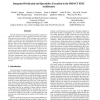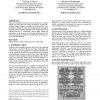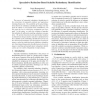415 search results - page 32 / 83 » On the energy-efficiency of speculative hardware |
ISCA
1999
IEEE
14 years 1 months ago
1999
IEEE
Sequential consistency (SC) is the simplest programming interface for shared-memory systems but imposes program order among all memory operations, possibly precluding high perform...
HPCA
2002
IEEE
14 years 9 months ago
2002
IEEE
Thread-Level Speculation (TLS) allows us to automatically parallelize general-purpose programs by supporting parallel execution of threads that might not actually be independent. ...
ISCA
1998
IEEE
14 years 1 months ago
1998
IEEE
Explicitly Parallel Instruction Computing (EPIC) architectures require the compiler to express program instruction level parallelism directly to the hardware. EPIC techniques whic...
ISLPED
2000
ACM
14 years 1 months ago
2000
ACM
Processors in portable electronic devices generally have a computational load which has time-varying performance requirements. Dynamic Voltage Scaling is a method to vary the proc...
DATE
2009
IEEE
14 years 25 days ago
2009
IEEE
The process of sequential redundancy identification is the cornerstone of sequential synthesis and equivalence checking frameworks. The scalability of the proof obligations inhere...



